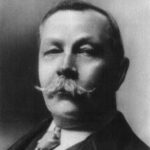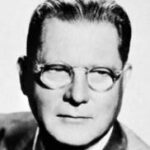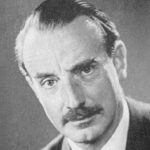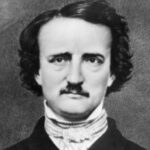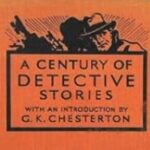Clicking on the following links or images will take you to the mystery/crime book collections covered in this section:
Commentary:
This section primarily focuses on four authors whom I consider to be giants in the field of mystery and crime: Agatha Christie, Arthur Conan Doyle, Erle Stanley Gardner and James Hadley Chase. In addition to these authors, I have also created a fifth subsection for other great authors in the same field.
Foremost among all these authors is Edgar Allan Poe, who single-handedly invented the mystery/detective genre with his story The Murders in the Rue Morgue, published in 1841. This short story includes all the essential elements of the modern detective story: the brilliant detective, his personal friend who serves as narrator, and the detailed reasoning leading up to final revelation. Poe even coined a new term for the science of deductive reasoning: “ratiocination”. It is no exaggeration to say that Poe’s story forever changed the history of world literature from the time it was published.
Poe’s detective C. Auguste Dupin, along with his unnamed narrator friend, served as the template for many other mystery stories and detective/narrator pairs which came later (of whom the most famous are Sherlock Homes/Dr. Watson and Hercule Poirot/Captain Hastings). The first notable full-length detective novel based on Poe’s model was The Mystery of Orcival (in French) by Émile Gaboriau, published in 1867. The following year (1868) saw the publication of the first modern English detective novel The Moonstone, by Wilkie Collins. It is truly remarkable that the basic detective-story template has not changed much in the 150+ years since these two novels were published, which is a testament to the quality of these stories as well as to Poe’s genius.
The writer who was single-handedly responsible for igniting the explosive popularity of detective fiction in the 20th century and beyond was Sir Arthur Conan Doyle. He created two of the most beloved characters in all of literature: Sherlock Holmes and Dr. Watson. Other than his first two stories (A Study in Scarlet and The Sign of Four), all his subsequent Holmes stories were serialized in the magazine The Strand, with beautiful illustrations by Sidney Paget. There were often long lines of people waiting for the next issue of the magazine with its latest installment of Sherlock Holmes stories.
A worthy successor to Conan Doyle was Agatha Christie, the ‘Queen of Crime’ who is undisputedly the greatest mystery writer who ever lived. She is the best-selling fiction writer of all time, with over 2 billion copies of her books having been sold. Starting from her first published novel in 1920 (The Mysterious Affair at Styles), she turned out an incredible body of work with highly ingenious plots spanning more than 50 years. Christie created two iconic characters Hercule Poirot and Miss Marple, who are widely known not just in the mystery genre but in all of literature.
Erle Stanley Gardner created a variation of the traditional ‘armchair detective’ in the form of Perry Mason, a no-nonsense dynamic lawyer who solved mysteries more by shoe-leather investigation than by deductive reasoning. Gardner’s books moved at a rapid pace and were highly entertaining, though in many cases the plot was somewhat flimsy. The Perry Mason novels are among the best-selling book series of all time.
A genre closely linked to the mystery novel is the crime novel. The crime-novel genre started to become popular around the beginning of the 20th century, and a good example is The Four Just Men by Edgar Wallace. This type of novel often included the point of view of the criminals, with an unsentimental portrayal of crime, violence, and sex, sometimes to the point of romanticization. Many bestsellers today (such as the ones written by James Patterson) still use the same basic plot device of a serial killer or conspirator in an ongoing battle of wits with law enforcement.
A leading practitioner of the crime novel in the 20th century was James Hadley Chase, who started writing in the late 1930s. Chase is one of the best thriller writers of all time and he is rightly called the ‘thriller maestro of the generation’. His stories move at a rapid pace with exciting plots and characters, and his books are impossible to put down. Although Chase’s works are looked down upon by many highbrow literary critics, I would take them any time over ponderous books considered to have more ‘artistic merit’ but which one has to struggle to get through. No one can ever say that they had to struggle to complete one of Chase’s amazing books!
Regarding other authors in the mystery/crime genre besides the ones named above, I have attempted to select a moderate number of books which I consider both notable and representative of this genre. The selection includes traditional mystery writers like G.K. Chesterton (author of many Father Brown short stories) and John Dickson Carr (who specialized in locked-room mysteries), as well as modern crime writers like Mario Puzo (who wrote the quintessential gangster novel The Godfather) and Dennis Lehane (many of whose crime novels have been made into hit films).
One final note. There is often overlap between the mystery/crime genre and the adventure/espionage genre, and sometimes a given book may not fit neatly into one category or the other. When such cases arise, I have used my judgment to assign a book in a particular category, though I may assign other books by the same author to the alternate category. (In a very small number of cases, I have listed a book multiple times in different categories.) I realize that this assignment could be subjective; however, I believe the vast majority of books covered here have been properly assigned to the correct category.


